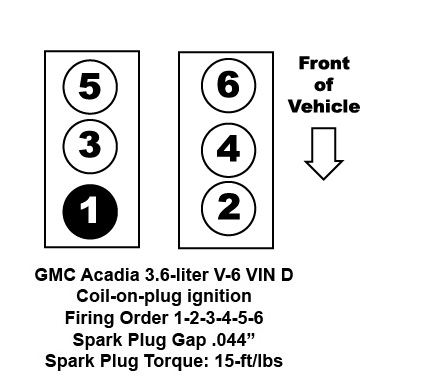This post contains affiliate links. If you click on a link and make a purchase, we may earn a commission at no additional cost to you.
Under the hood of every Jeep, there lies a symphony of components working in harmony to power your adventures. One crucial aspect of this intricate orchestra is the firing order, a sequence that dictates the precise timing of ignition in the engine cylinders. In this article, we delve into the specifics of the Jeep 3.6L firing order, unraveling the mystery behind this essential rhythmic pattern that propels your vehicle forward.
Understanding the Basics: Before we delve into the specifics of the Jeep 3.6L Engine firing order, it’s essential to grasp the fundamental concept of firing orders in general. The firing order of an engine refers to the sequence in which each cylinder ignites its fuel-air mixture, creating controlled explosions that generate power. This sequence ensures the engine operates smoothly, minimizing vibrations and maximizing efficiency.
The Jeep 3.6 V6 Engine: The Jeep 3.6-liter Pentastar V6 engine is a powerhouse that finds its home in various Jeep models. Known for its balance of power and fuel efficiency, this engine has become a staple in the Jeep lineup. To truly appreciate the Jeep 3.6 firing order, we first need to understand the engine’s layout.
The Jeep 3.6 V6 engine consists of six cylinders arranged in a V-shaped configuration. This arrangement, often referred to as a V6 engine, is common in many modern vehicles due to its optimal balance of performance and space efficiency.
Cracking the Code: The Jeep 3.6 Firing Order: In the case of the Jeep 3.6-liter V6 engine, the firing order is a specific sequence that dictates the ignition timing of the cylinders. The firing order for this engine is 1-2-3-4-5-6. But what does this sequence mean?

In a V6 engine like the 3.6-liter Pentastar, the firing order ensures that the ignition occurs in a balanced and controlled manner. For the Jeep 3.6 engine, the first cylinder on the driver’s side is numbered as cylinder 1, followed by cylinders 2, 3, 4, 5, and 6.
The Significance of Firing Order: The firing order might seem like a simple numerical sequence, but it plays a crucial role in the engine’s performance. Proper ignition timing is vital for the engine to operate smoothly, ensuring that each cylinder fires at the right moment during the engine’s rotation cycle.
A correct firing order minimizes engine vibrations, enhances fuel efficiency, and optimizes power output. It ensures that the engine operates with precision, delivering the seamless performance that Jeep enthusiasts have come to expect.
The Impact on Performance: Understanding the firing order is not just a matter of mechanical knowledge; it directly impacts your Jeep’s performance. The precise sequencing of ignition ensures that the power generated by each cylinder is harnessed efficiently, translating into a smoother ride, better acceleration, and improved overall drivability.
Whether you’re tackling challenging off-road trails or cruising on the highway, the correct firing order is fundamental to your Jeep’s ability to respond promptly to your driving demands. It contributes to the vehicle’s reliability and its capability to handle various driving conditions with ease.
Maintenance and Troubleshooting: Knowledge of the firing order is also invaluable when it comes to maintenance and troubleshooting. If you experience engine misfires, rough idling, or decreased fuel efficiency, understanding the firing order can help pinpoint the issue.
By recognizing the correct firing sequence, you can diagnose problems related to ignition timing, such as faulty spark plugs, ignition coils, or fuel injectors. This knowledge empowers you to communicate effectively with mechanics, ensuring that your Jeep receives the necessary repairs promptly.
Conclusion: The Heartbeat of Your Jeep: In the realm of automotive engineering, the firing order is akin to the heartbeat of your vehicle. For Jeep enthusiasts, it’s a part of the soul of their beloved off-road companion. Understanding the Jeep 3.6 firing order not only deepens your appreciation for the intricate workings of your engine but also empowers you as a driver and caretaker of your Jeep.
So, the next time you turn the key and feel the engine roar to life, remember the orchestrated sequence of 1-2-3-4-5-6 that propels you forward. It’s not just a numerical pattern; it’s the rhythm of adventure, the beat of exploration, and the pulse of your Jeep’s enduring spirit.
This post contains affiliate links. If you click on a link and make a purchase, we may earn a commission at no additional cost to you.
























